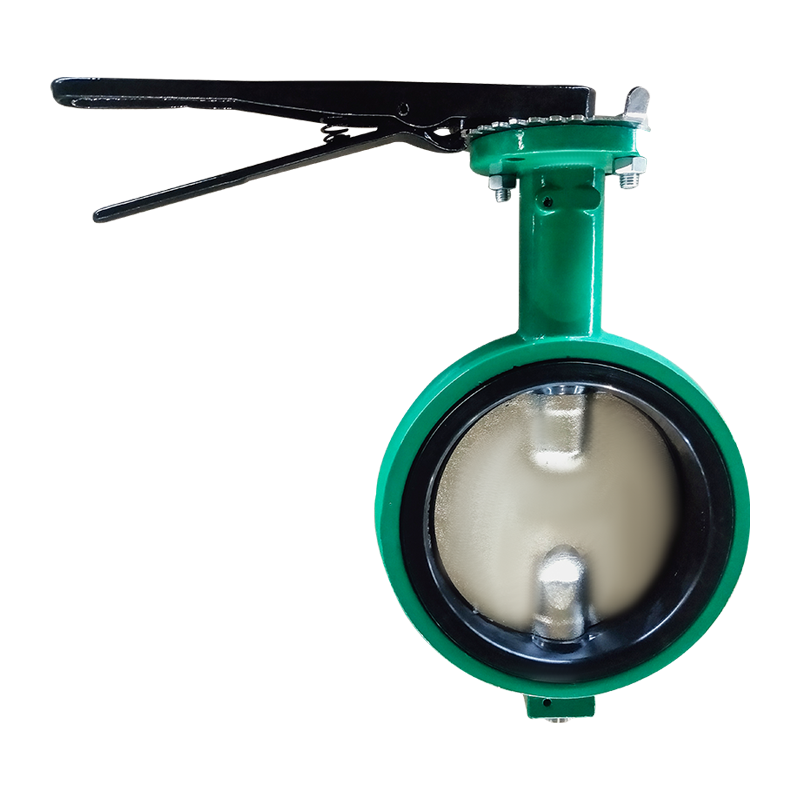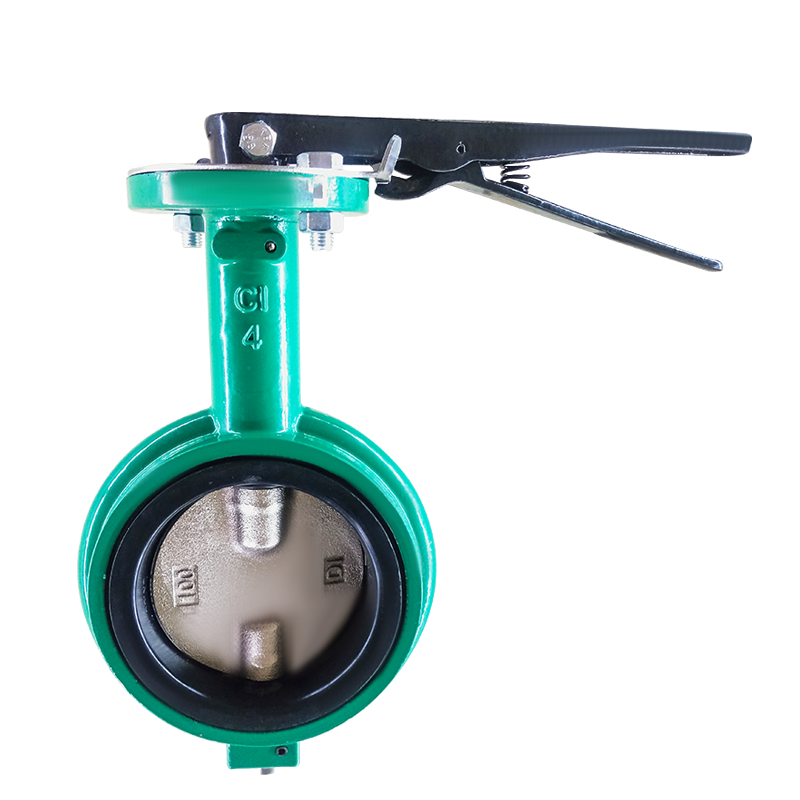
- Call Us
- +8618633052223
- njhdvlz@163.com
Aug . 02, 2025 04:20 Back to list
Stainless Steel Sanitary Butterfly Valve | Hygienic & Durable
Stainless steel sanitary butterfly valves are at the core of flow control systems across hygienic industries worldwide, combining robustness, precision, and exceptional resistance to corrosion. In this article, we detail the technical landscape, manufacturing processes, specifications, and latest industry insights surrounding these valves, with a special focus on the Long Neck Wafer Type Model 25 Butterfly Valve—stainless steel sanitary butterfly valve—and closely related products such as stainless steel flanged butterfly valve, ss butterfly valve, and pvdf butterfly valve. We incorporate industry trends, standard references, real specs, and data-driven comparison to equip engineers, procurement professionals, and technical managers for optimal decision-making.
1. Market Landscape: Growth and Industry Trends
According to MarketsandMarkets, the global butterfly valve market is projected to exceed $13.5 billion by 2027, fueled by increased adoption in food & beverage, pharmaceuticals, water treatment, and chemical sectors. The demand for stainless steel sanitary butterfly valves has surged over 8% CAGR in hygienic and corrosive environments due to their durability, cleanability, and compliance with FDA, ISO, and EHEDG standards.

2. Technical Overview: What Sets Stainless Steel Sanitary Butterfly Valves Apart?
- Hygienic Design: Ensures CIP/SIP cleaning, smooth bore, minimal dead space, and food-safety conformity.
- Materials: Grades such as SS304, SS316, or dual phase stainless; enhanced mechanical/chemical resistance with PVDF coatings for specific media.
- Construction: Wafer, lug, and flanged ends available; integral and replaceable seals (EPDM, PTFE, Viton).
- Compliance: FDA/3A/EHEDG certifications for process industries, ISO/ANSI/EN standards for dimensional and pressure compatibility.
- Actuation: Manual, pneumatic, electric or gear-driven, with feedback and control integration.
Common Grades and Variations
| Valve Type | Body Material | Disc Material | Seal Material | Standard | Common Application |
|---|---|---|---|---|---|
| Stainless Steel Flanged Butterfly Valve | SS304/SS316 | SS304/SS316 | EPDM/PTFE | ISO, ANSI, DIN | Potable Water, Pharma |
| SS Body Butterfly Valve | SS316L | SS316L | Viton/PTFE | 3A, FDA | Dairy, Brewing |
| PVDF Butterfly Valve | PVDF | PVDF | FKM/EPDM | ANSI, EN | Acids, Ultra-pure Chemicals |
| SS 304 Butterfly Valve | SS304 | SS304 | EPDM/PTFE | FDA, ISO | Food Processing |
Industry Data: Key Technical Parameters
| Parameter | Typical Value (SS Sanitary Butterfly Valve) | Standard Reference |
|---|---|---|
| Size Range | DN25–DN300 | ISO 5752 |
| Pressure Rating | PN10/16, Class 150 | EN 1092, ANSI B16.5 |
| Body Material | SS304, SS316, SS316L | ASTM A351 CF8/CF8M |
| Seal Material | EPDM, PTFE, FKM | FDA 21 CFR 177.1550 |
| Design Temp. | -20°C to +180°C | EN 12266 |
| Finish | Ra ≤ 0.8μm | EHEDG, 3A |
| Testing | 100% seat & shell (water/air) | ISO 5208 |
| Certification | FDA, ISO, CE | EHEDG, 3A Sanitary |
3. Long Neck Wafer Type Model 25 Butterfly Valve: Complete Technical Profile
This advanced valve model, manufactured by Hongda Valve (official product page), stands out for its long neck design (making insulation easier), robust SS body and disc, and full compliance with global sanitary, water, and industrial standards.
| Feature | Data (Model 25) |
|---|---|
| Valve Type | Wafer, Long Neck Body |
| Size Range | DN50–DN600 (2"–24") |
| Pressure Class | PN16 (232 psi), Class 150 |
| Body Material | CF8M (SS316), CF8 (SS304) |
| Disc Material | CF8M (SS316), Duplex Steel |
| Shaft Material | AISI 420/431 or Duplex Stainless |
| Seal Options | EPDM, PTFE, Viton |
| Face to Face | ISO 5752 Series 20 |
| End Connection | Wafer - Compatible with ISO/EN, ANSI, JIS |
| Actuation | Manual, Electric, Pneumatic |
| Design Standards | ISO 5752, API 609, EN 593 |
| Application Standard | 3A/FDA (food), ISO (water/gas), API (oil/gas) |
| Surface Finish | Ra ≤ 0.8μm (hygienic) |

Pie Chart: Model Material Choices Among Buyers
4. Stainless Steel Sanitary Butterfly Valve Manufacturing Process
Production Flow Diagram for stainless steel sanitary butterfly valve
- Material Selection: Strictly select certified SS304/316 raw ingots (mill certificates, traceability).
- Shell Casting: High-precision shell (lost wax) or precision sand casting for surface finish and wall uniformity.
- Heat Treatment: Solution annealing to relieve stress and optimize crystal structure (for corrosion resistance).
- CNC Machining: Automated CNC lathes ensure precise tolerance (typically ±0.02mm), critical for seat fit and disc alignment.
- Surface Treatment: Electro-polishing and manual buffing for ultra-smooth, hygienic surface (Ra ≤ 0.8μm), essential in food and pharma use.
- Seal & Hardware Installation: Fitment of FDA/FKM/PTFE O-rings/seals; ANSI/B16.11 stem hardware.
- Assembly: Clean-room assembly for food-grade valves, anti-static and fire-safe design for industrial models.
- Testing: Each unit tested to ISO 5208 for shell strength, seat leakage (water, air, vacuum), cycle test (>10,000 cycles).
- Final Inspection & Documentation: Every valve tagged, serialized, and supplied with full EN10204-3.1 material & test report.
Industry Standards and Compliance Highlights
- Food & Pharma: Designed and certified per FDA 21 CFR, 3A Sanitary, EHEDG; documentation per GMP/CE standards.
- Water & Wastewater: ISO 5752 (face-to-face), EN 1092 flanges, WRAS/NSF certified seals.
- Testing: 100% hydro, air, and leakage testing; cycle life validated for >10,000 operations.
- Traceability: Full batch/serial documentation; EN10204 certification provided for industrial/regulated uses.
5. Applications and Use Case Scenarios
Stainless steel sanitary butterfly valves are indispensable in modern process engineering for their maintenance-friendly design, efficiency, and secure shutoff/minimal contamination risk. Typical application zones include:
- Food Processing: Dairy, beverage, beer, sugar—hygenic, easily cleaned, zero retention.
- Wastewater Treatment: Corrosion-proof for saline, caustic, and aggressive media streams.
- Pharmaceutical: Aseptic, CIP/SIP cycle compatible, full FDA/3A compliant.
- Oil & Gas / Petrochem: Fire-safe, high-pressure, anti-static features available.
- Water Distribution: Long life, reliability, and straightforward actuation.
- Chemical Processing: PVDF/EPDM/PTFE combinations withstand acids, bases, solvents.
Typical Industrial Case: Dairy CIP Automation
A leading European dairy plant upgraded to stainless steel sanitary butterfly valves (Model 25, SS316, PTFE seat) to automate Cleaning-in-Place (CIP) lines, boosting process uptime by 23%, minimizing contamination risks. Valves supplied passed EN10204-3.1 traceability, 3A and FDA compliance, and delivered 120,000 cycles maintenance-free.
6. Cost Comparison: SS Butterfly Valve Pricing & Value Analysis
The choice between ss butterfly valve, ss 304 butterfly valve, ss body butterfly valve and pvdf butterfly valve depends on the media, environment, and required standard. Below is a real-world indicative price comparison based on international market data (Q2 2024) for DN80/PN16/hand lever valves:
| Valve Type | Material | Approx. Price [USD/Pc] | Pressure/Temp. | Target Industry |
|---|---|---|---|---|
| SS Body Butterfly Valve | SS316L | $49–$65 | 16 bar / 180°C | Pharma/Food |
| SS 304 Butterfly Valve | SS304 | $36–$49 | 10 bar / 120°C | General Hygienic |
| Stainless Steel Flanged Butterfly Valve | CF8M (SS316) | $65–$115 | 16 bar / 180°C | Petrochem, Chem |
| PVDF Butterfly Valve | PVDF | $27–$42 | 10 bar / 90°C | Chemical/HF Acid |
Bulk order, international certification requests, or special alloys (Duplex, Alloy 20) may increase the ss butterfly valve price by 12–28% above the base range.
7. Supplier & Manufacturer Comparison: How to Choose the Right Partner?
| Supplier | Highlighted Strength | Compliance | Global Reach | Key Partner Brands |
|---|---|---|---|---|
| Hongda Valve | Custom-engineered, stock & OEM, 10+ year warranties | FDA, ISO, EHEDG, 3A, API | 120+ countries | Danone, BASF, Nestlé |
| Alfa Laval | Process automation, global support | EHEDG, FDA, EN | Worldwide | Pfizer, Coca-Cola, Veolia |
| Kitz Corp | Materials diversity, Asian networks | JIS, ISO | Asia, EU | Toyota, Shell, Hitachi |
| Emerson (Keystone) | Automation and modular actuation | API, EN, ANSI | Global | BP, SABIC, Siemens |
Customization & Turnkey Solutions
- Spec-driven Design: Bore size, face-to-face (ISO/DIN/ANSI), flange compatibility, actuation decking, and marking per project.
- Documentation: 3.1B Material/data sheets, test records, and serialized tracking for critical industries.
- Delivery Times: 7–15 days typical ex-works (Long Neck Wafer Type Model 25), expedited service upon request.
- After-sales: Global technical support, on-site commissioning, and user training.
8. FAQ: Key Technical Terms & Operational Guidance
- What does "CF8M" or "SS316" mean in butterfly valve specs?
CF8M (AISI 316) is a stainless steel alloy with 16%–18% chromium, 10%–14% nickel, and 2%–3% molybdenum, providing excellent corrosion resistance in aggressive sanitary and chemical processes. - Why is surface finish (e.g., Ra ≤ 0.8μm) important in sanitary butterfly valves?
A smoother finish greatly reduces microbial retention and simplifies CIP/SIP cleaning, making Ra ≤ 0.8μm a benchmark for pharmaceutical/food use per 3A/EHEDG. - How do seal materials like PTFE, EPDM, and Viton differ?
PTFE resists chemicals and high temps but is stiffer; EPDM is ideal for water/steam; Viton excels in aggressive hydrocarbons and higher temperatures. - What is the difference between wafer, lug, and flanged ends?
Wafer valves fit between flanges (bolted assembly), lug valves allow installation at line ends, while flanged valves have their own flange faces for robust jointing. - What are EN10204, 3.1B, and similar certificates?
EN10204 3.1 (or 3.1B) is a material test certificate, proving chemical/physical properties, essential for regulated industries (API, ISO projects). - Why choose a PVDF butterfly valve?
PVDF gives unique resistance to strong acids, caustics, and solvents, often specified for ultrapure or corrosive chemical service where regular SS would degrade. - How long is the service life of a stainless steel sanitary butterfly valve?
Typically, with proper material and seat selection, 5–10 years or 50,000+ cycles. Regular preventive maintenance extends life; improper seat/media matching may reduce it.
9. Why Long Neck Wafer Type Model 25: Decision Points
- Thermal Insulation Ready: Extended neck enables insulation in chilled/steam lines without functional compromise.
- Genuine SS316/CF8M Construction: With EPDM/PTFE or optional FKM seat for ultra-wide chemical compatibility.
- Time-Proven Lifecycle: Over 100,000+ open/close cycles verified (ISO5208) in process plants globally.
- Universal Standardization: Machined to meet API, ISO, EN, ANSI, JIS face-to-face and pressure classes.
- Traceability and Certification: Each valve traceable via EN10204 document, eligible for international tenders or audits.
10. Final Word: Industry Credentials, Delivery, and Support
- Quality System: ISO 9001:2015, FDA, CE, EHEDG, 3A certification available on request or standard for relevant models.
- Warranty: 10-year warranty (defect/life cycle), online plus onsite warranty support.
- Lead Times: Standard models: 7–15 workdays, custom/bulk: 18–28 days. Fast-track orders available via Hongda’s priority desk.
- Tech Support: Free pre- and post-sale process consulting, documentation assistance, and 24/7 support via email, live chat, and phone.
- Client Testimonials: Major installations with Danone, Nestlé, SABIC, Qingdao Water Group, consistently report reduced downtimes and long-term savings.
- "Sanitary Valves in Food Processing" – EHEDG Knowledge Portal
- ""Performance Testing of Butterfly Valves to ISO 5208" – International Society of Engineering
- "Butterfly Valve Specification Trends" – Flow Control Network Forum
- "FDA 21 CFR on Elastomer Acceptance" – FDA Food Regulations
-
Stainless Steel Sanitary Butterfly Valve | Hygienic & Durable
NewsAug.02,2025
-
Double Flanged Short Pattern Butterfly Valve | Compact, Efficient Flow
NewsAug.01,2025
-
Precise 3-Inch Butterfly Valve Dimensions | Durable Flow
NewsJul.31,2025
-
3 Butterfly Valve Dimensions | GPT-4 Turbo Precision Specs
NewsJul.31,2025
-
Stainless Steel Sanitary Butterfly Valve for Hygienic Flow Control
NewsJul.30,2025
-
High-Performance Groove Butterfly Valve for Easy Installation
NewsJul.30,2025